1970 Chevelle Trivia
[ 1964 ] | [ 1965 ] | [ 1966 ] | [ 1967 ] | [ 1968 ] | [ 1969 ] | [ 1970 ] | [ 1971 ] | [ 1972 ]
Any interesting trivia for 1970 Chevelles? Let me hear from you and be sure to specify 1970 trivia as the subject.
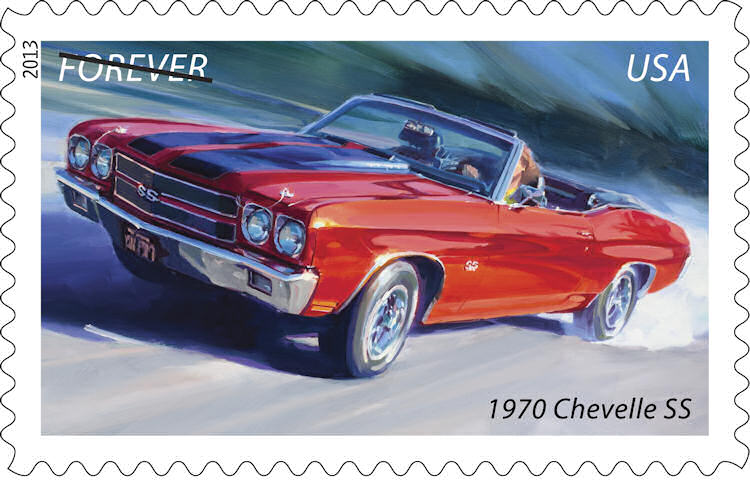
»» All 1970 body styles have vented gas caps.
»» Consensus for SS wheel colors are:
Dove Gray (Valspar #165816)
Dove Gray (Krylon #1605) The name has changed to Stone Gray I
believe
Dove Gray (Plastic Kote 364)
Argent silver for the front side, Dove gray for the back of the
wheel, and Dark metallic charcoal gray for the lug nut area.
»» SV coded hose vs. KY coded hose. The SS396 and SS454 came with one of two upper radiator hoses coded "SV" or "KY." The SV hose is typically found on Chevelles with H.D. cooling (those equipped with C60 air conditioning) and the LS6 with a 4.10:1 rear end gear ratio. The KY hose is typically found on all other SS396 and SS454 engines. The SV coded hose has a pronounced curve or "S" shape to it while the KY hose is much straighter in design.
Oddly enough assembly plants didn't always adhere to the typical. The SV curved hose has been documented on quite a number of SS396 Chevelles without air conditioning and the KY straighter hose has been documented on quite a number of LS6/4.10:1 Chevelles as well.
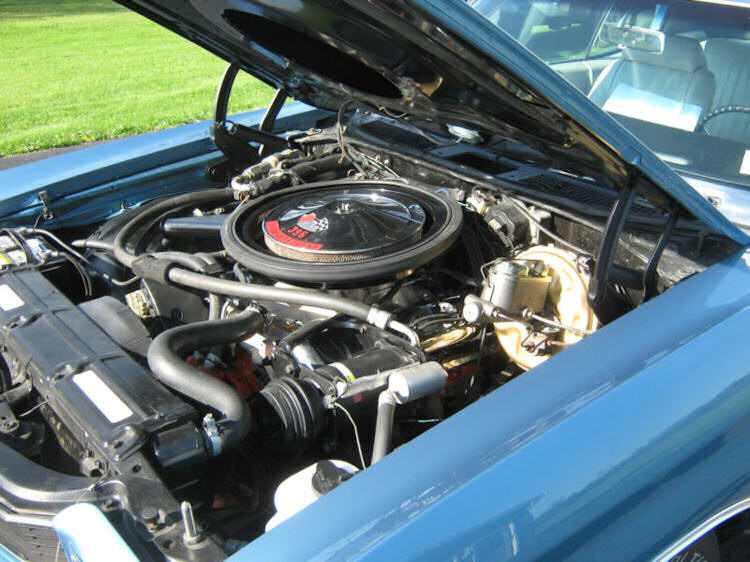
SV hose on SS396 with air conditioning.
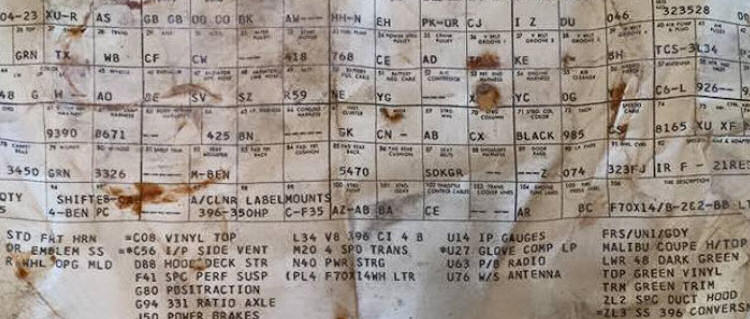
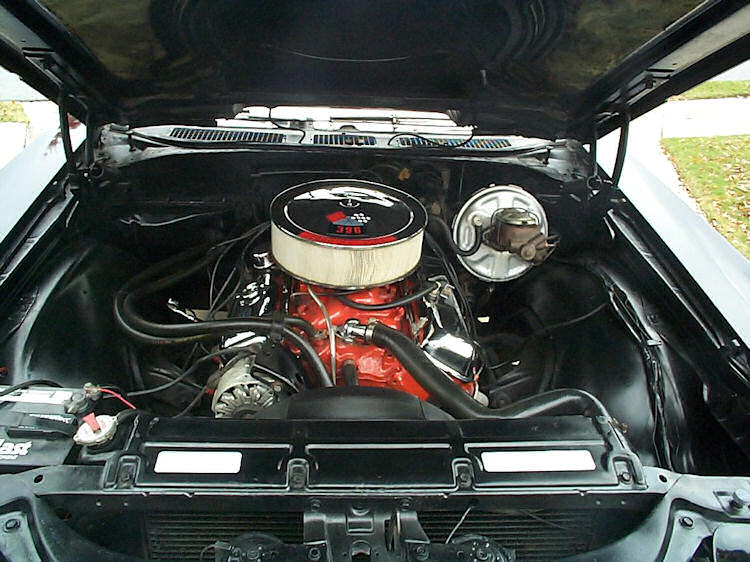
Documented SV hose on SS396 without air conditioning.
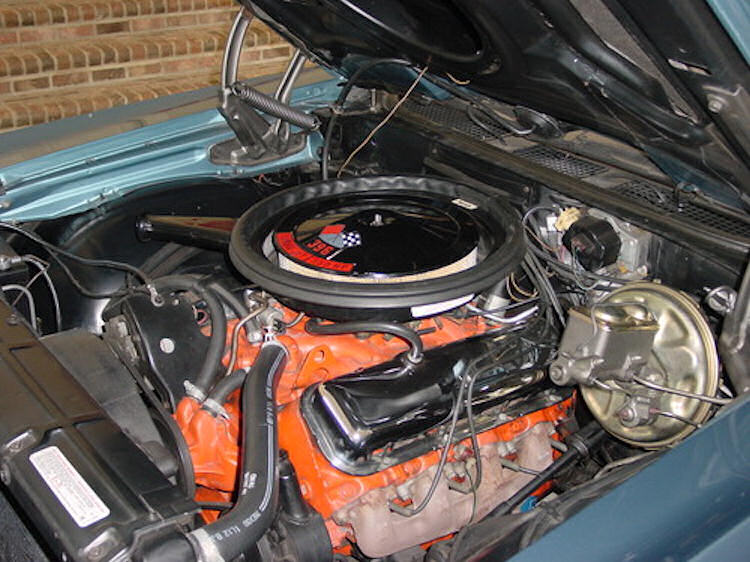
Documented KY hose on SS396 without air conditioning.
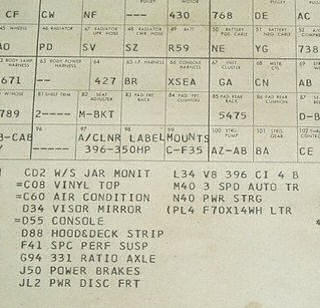 |
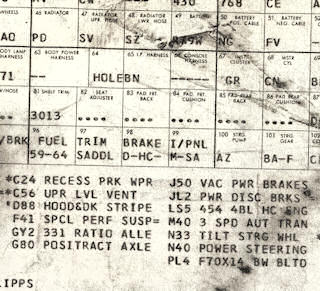 |
| Note both of these Chevelles are coded for SV upper radiator hose. The one on the left has A/C, the one on the right does not. Even though the one on the right is an LS5 note the LS5 in the right image below, it's coded KY. | |
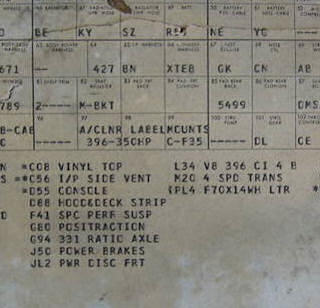 |
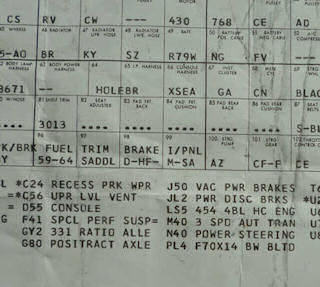 |
»» Even though the 396 cid engine now displaced 402 cubic inches and with the Z25 SS Equipment option it was still marketed as a 396 engine. The base 396 engine now was the L34 350hp version as the 325hp version was discontinued. A second 402 cid engine under RPO LS3 was available in any non-SS optioned Chevelle and was dubbed a 400-4 Turbo Jet, not to be confused with a special 2-barrel version of the small block engine dubbed the 400-2 Turbo Fire that was only available in the Monte Carlo and full size Chevrolets under RPO LF6.
»» The L78 396/375hp engine was discontinued by early December with the release of the LS6 454/450hp engine although orders for L78 Chevelles already in the pipeline were allowed to be built so there are a few L78 engines sold later than LS6 engines.
»» A front bench seat and H.D. floor-shifted 3-speed transmission was standard on SS396-optioned Chevelles but the SS454 optioned Chevelles were limited to either the H.D. Muncie M22 4-speed or the H.D. TH400 automatic transmission. Bucket seats were optional on the Malibu sport coupe, Malibu convertible, and the Malibu series sedan pickup (13680) whether SS optioned or not. The standard bench seat was cloth and coated fabric with an all vinyl bench seat being a $12.65 option. Since the optional buckets seats were always coated fabric the cost of the bucket seats was for the pair of seats themselves and no addition cost beyond the $121.15/$123.35 was added.
»» Gauges (RPO U14) were optional in 1970 and could be ordered on any Malibu V8 series sport coupe, convertible, or sedan pickup as well as the Monte Carlo and included water temperature, ammeter, and tachometer. While the SS-optioned Chevelles and the Monte Carlo automatically got a round pod dash without gauges, when RPO U14 was ordered a non-SS optioned Malibu also got the round pod dash with appropriate gauges. The oil pressure gauge was dropped with the U14 gauge option and reverted back to a warning lamp. See the page 1970 Chevelle SS396 & SS454 for more details.
»» A second 402 cid engine was available in all non SS-optioned Chevelles under RPO LS3 and was rated at 330hp. Many of those with this engine in a Malibu have dubbed them a Malibu 400.
»» A new 400 cid small-block engine was introduced as the Turbo-Fire 400 (the 402 cid big-block was called the Turbo-Jet 400 in non-SS optioned Chevelles). This engine came with a 2-barrel carburetor and was only available in the Monte Carlo and full size Chevrolet models.
»» With the introduction of the 454 option, RPO Z15, the Chevelle now had two distinct performance options; the Z25 with the Turbo-Jet 396 and Z15 with the Turbo-Jet 454.
»» While the Z25 (SS 396) option could be ordered with an M20 or M21 Muncie 4-speed or TH400 automatic, the Z15 option (SS 454) mandated either the M22 or heavy duty TH400. It's uncertain if the M22 was available with the Z25 option or not but to date no build sheet I have shows one being ordered.
»» The LS6 engine option proved to be more popular than the base LS5 (454/360hp) in the Z15 option. Of the 8,773 Z15 options sold, buyers opted for the LS6 4,475 times while 4,298 Z15 buyers were happy with the LS5 engine.
»» The new Monte Carlo had its own SS 454 option under RPO Z20. The LS5 was the only engine available in the Monte Carlo SS. See The First Generation Monte Carlo website for more details on the 1970 Monte Carlo.
»» The Chevelle 300 Deluxe series name was dropped in favor of the Chevelle Standard name. Also gone was the 2-door pillar coupe "27" model designation and all 2-door Chevelles, except convertibles and pickups, were now sport coupes. In 1970 the 300 Deluxe series name did live on but only on Canadian-built 1970 Chevelles.
»» It is suspected that Arlington, Atlanta, and Flint did not build convertibles and possibly neither Atlanta nor Flint built any station wagons in 1970; it is known that Arlington did build station wagons.
Propeller Shaft
»» Many restorers of Chevelles like to paint nice, clean markings on the driveshaft. The photos below show a 1970 Baltimore LS6 driveshaft and its original markings showing not all were neat, close together, and just behind the front yoke as you'll see on many restorations. Not to say what's correct and what's not, just saying not all are equal and, apparently, there's no 'wrong' way to do it. Photos courtesy of Rick Nelson of Musclecar Restoration & Design, Inc.


As pulled from the car.
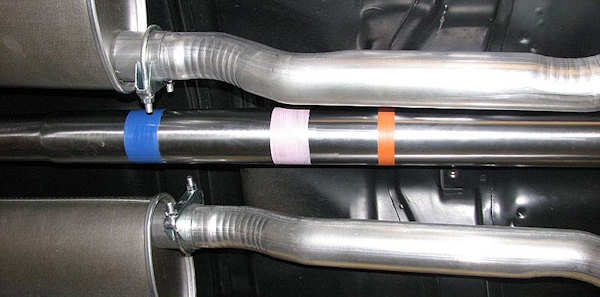
After restoration.
Bucket Seat Piping

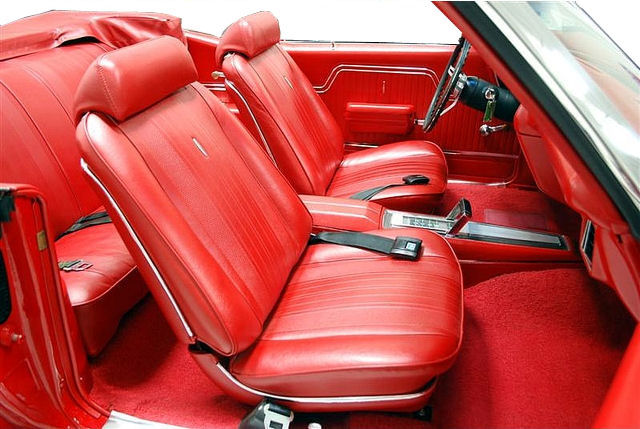
Bright trim on the lower portion of the (red) bucket seat are not correct.
Bright trim was only used around the backs of bucket seats as shown
in the top photo.
Early vs. Late Hood
All hoods were redesigned sometime in late April/early May to include horizontal creases on the underside bracing to create a "crush zone" to allow the hood to absorb energy in the event of a head-on collision. Also note the cutouts and insulation was redesigned as well.
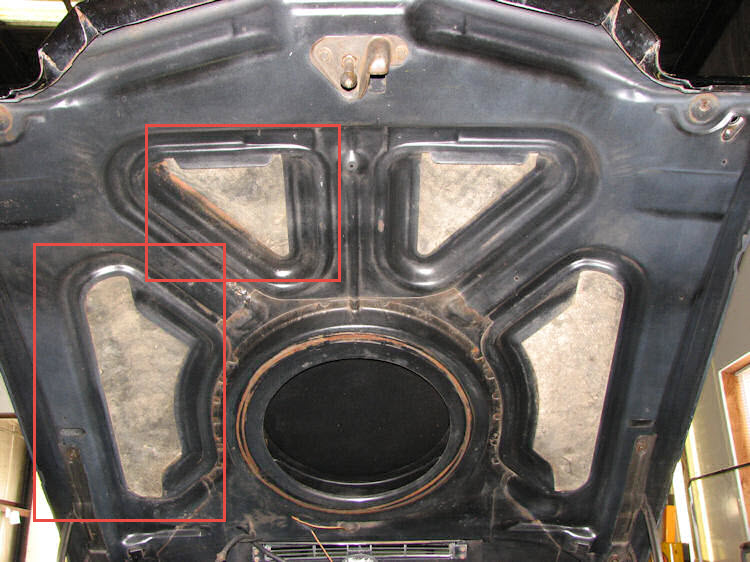
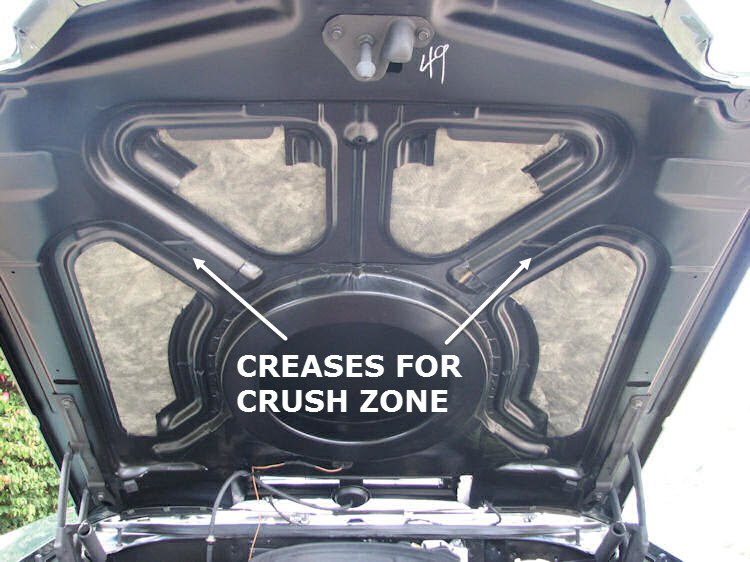
Early (top) vs. late (bottom) hood redesign.
Racing
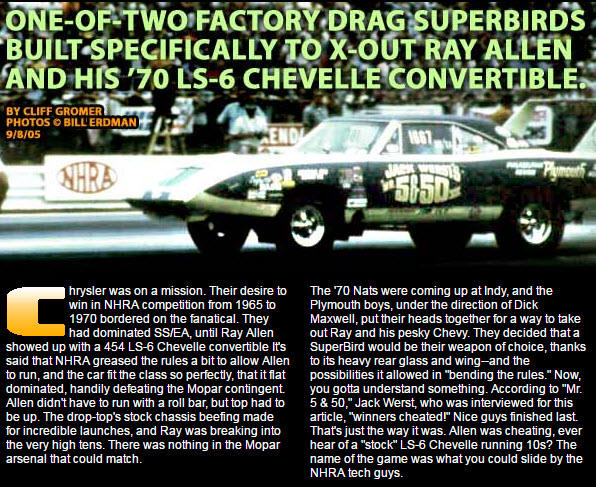
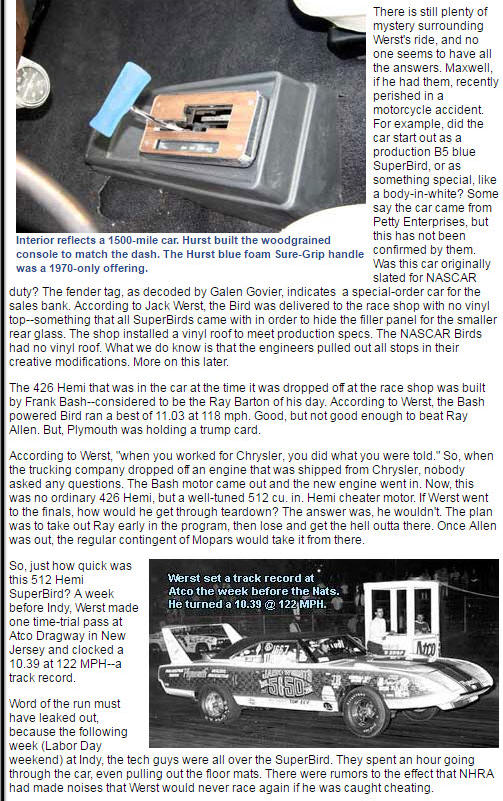
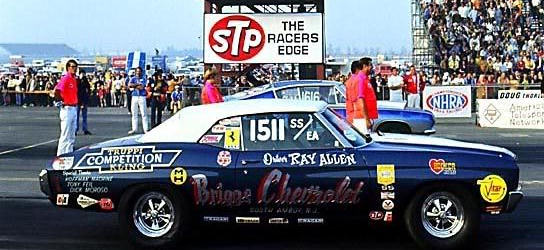
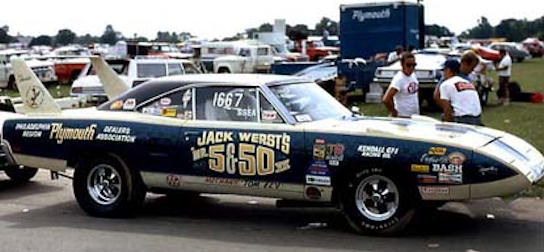
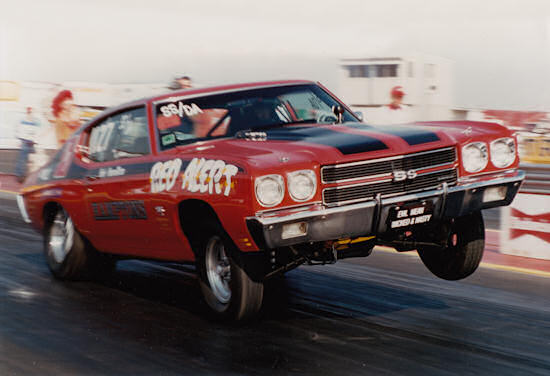
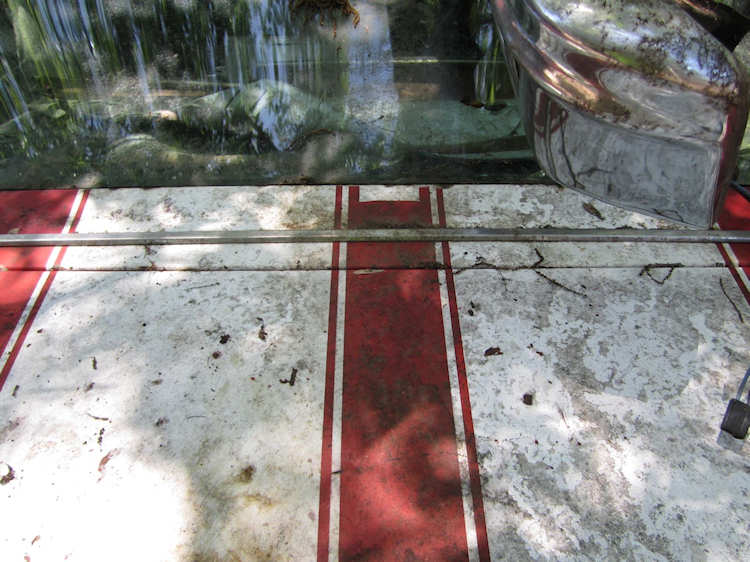
Non-SS optioned Malibu sport coupes, convertibles, and El Caminos were
candidates for D88 stripes. Note the stripes were applied right up to
the rear window molding even when a vinyl top was called for. Also interesting
is the white rectangular area at the top of the center red painted area;
why would that area be painted white? This car also has the
stripe corners squared off instead
of rounded.
Photo Courtesy Duane Walker
07/25/2017: Learned something interesting today. Chevelles built
(or assembled) at the Caracas, Venezuela plant assigned VINs a bit different.
The basic "13637" for a Malibu sport coupe still applies but
a letter is used instead of a number for the model year (K=1970, A=1972
and B=1972) followed by the letter "C" then the sequence number.
A typical VIN for a 1970 Malibu sport coupe would read 13637KC123456.
The "KC" does not mean Kansas City but rather K is 1970 and
C is Caracas. The Fisher Body Number plate will have the same sequence
number as the VIN stamped on it.
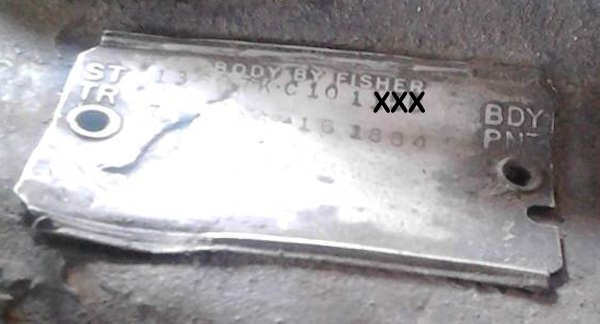
CHEVELLE emblem placement
Hard to imagine how anyone could get this wrong.
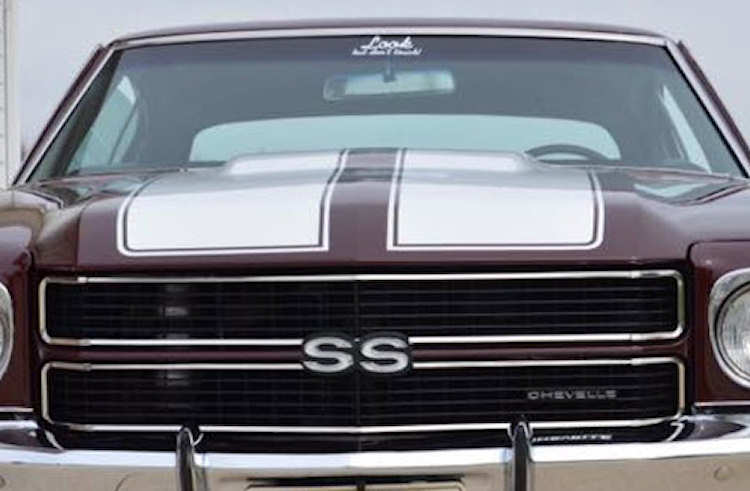
Correct
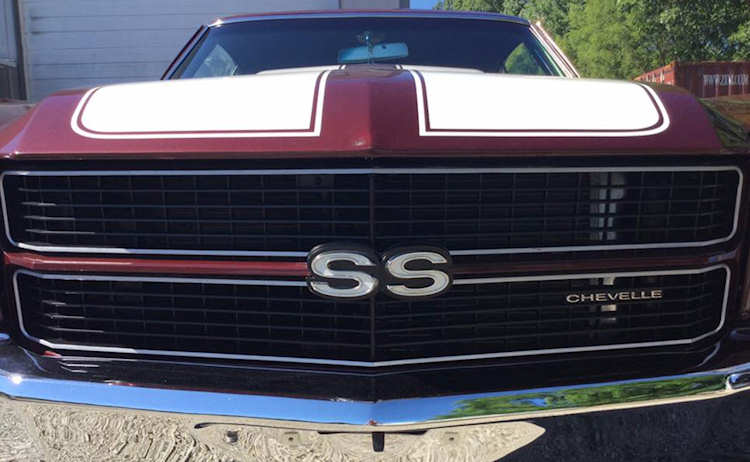
Incorrect

 Home
Home Decode
Decode Tech
Tech Tools
Tools Dale's Coins/CDs
Dale's Coins/CDs Contact
Contact Chevelle
of the Month
Chevelle
of the Month Things
For Sale
Things
For Sale Custom
Stickers
Custom
Stickers